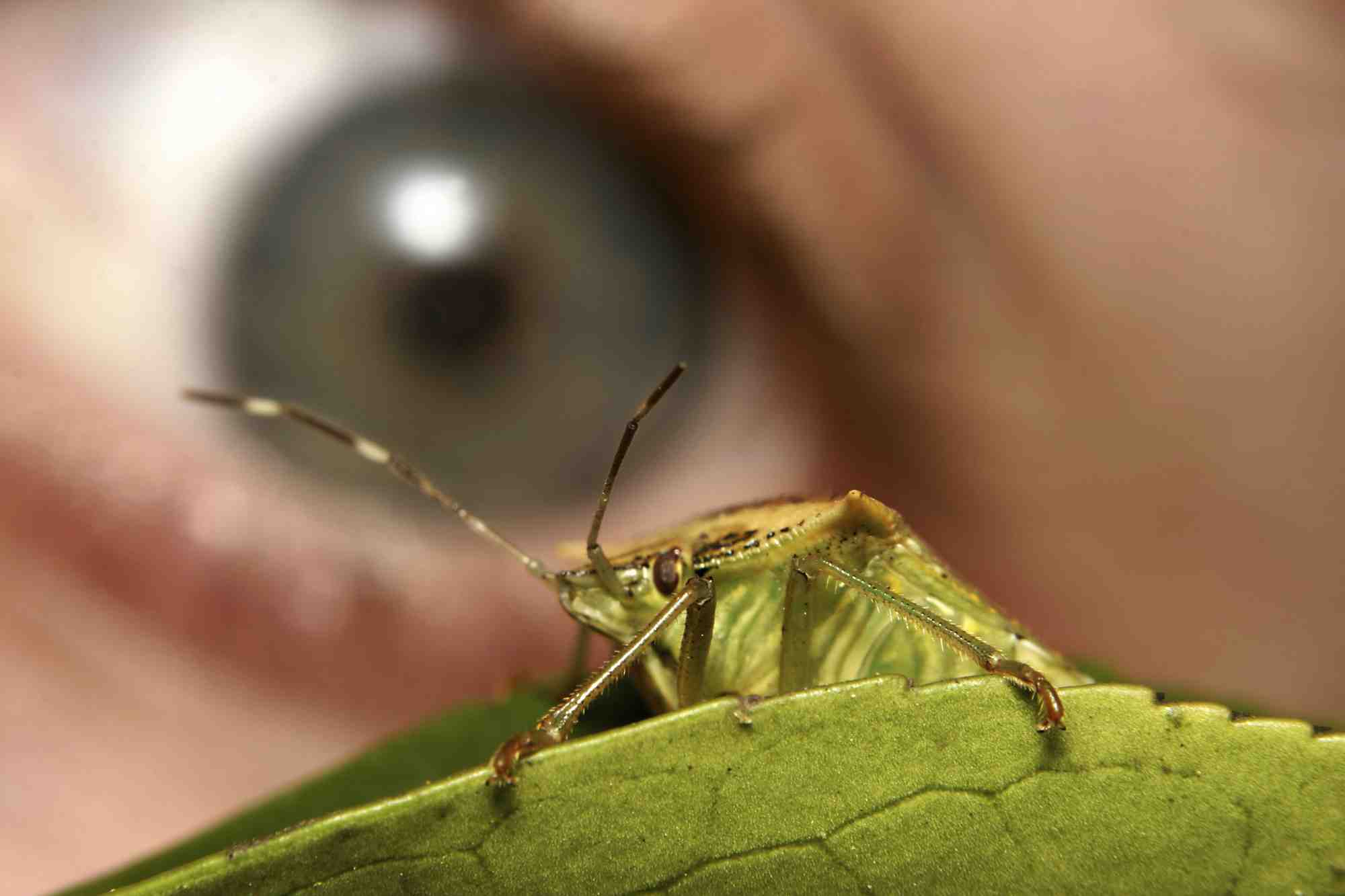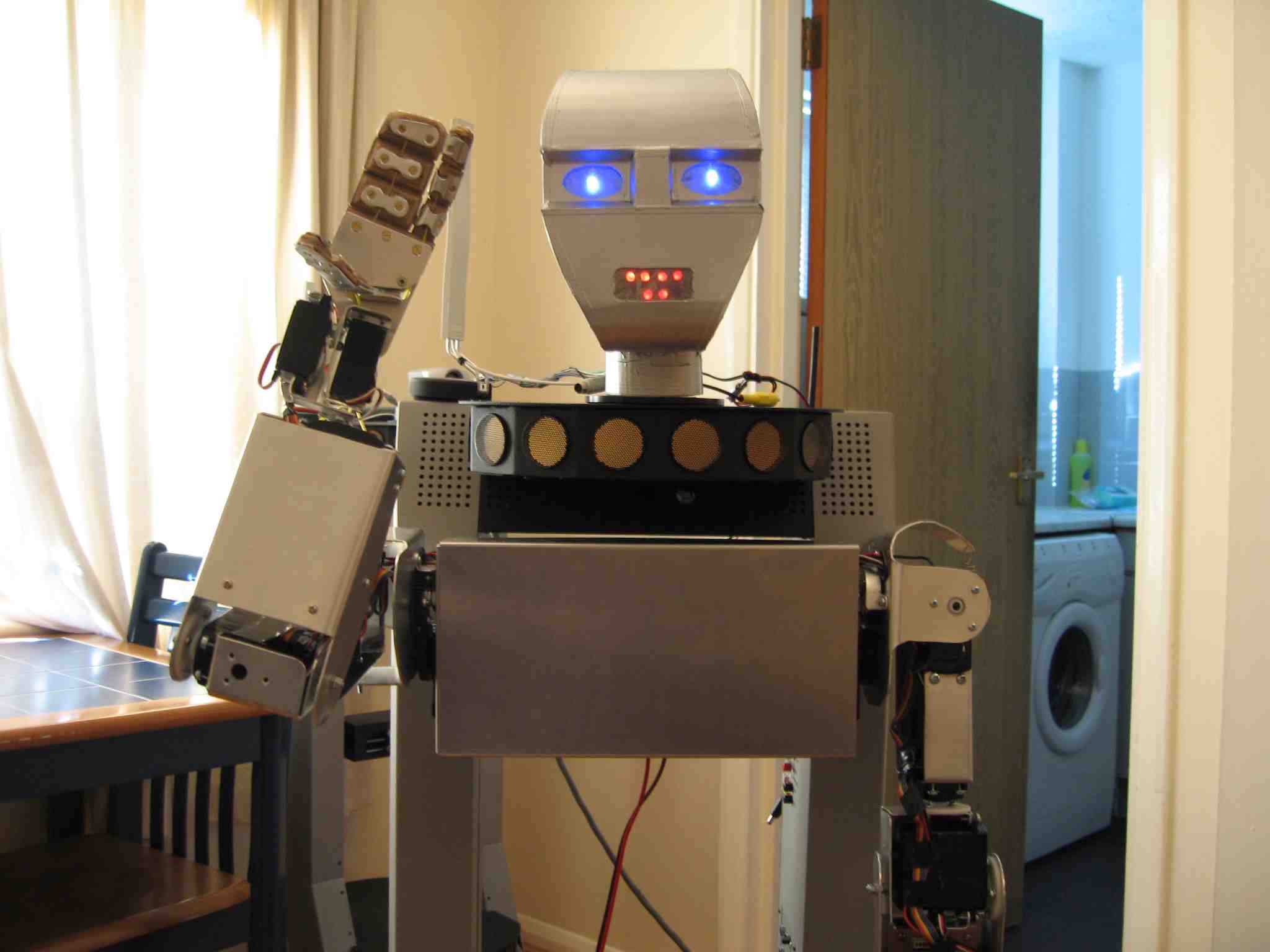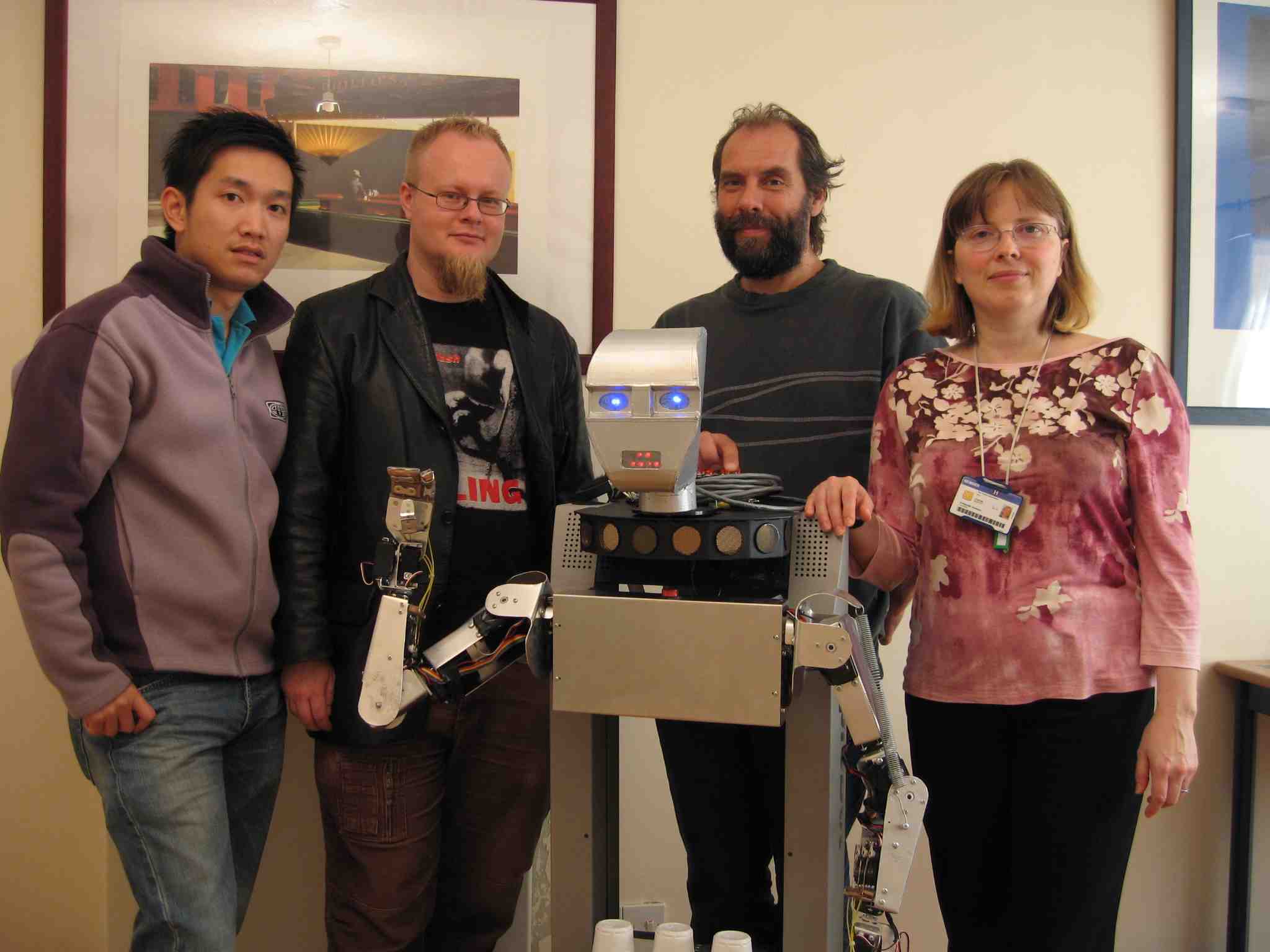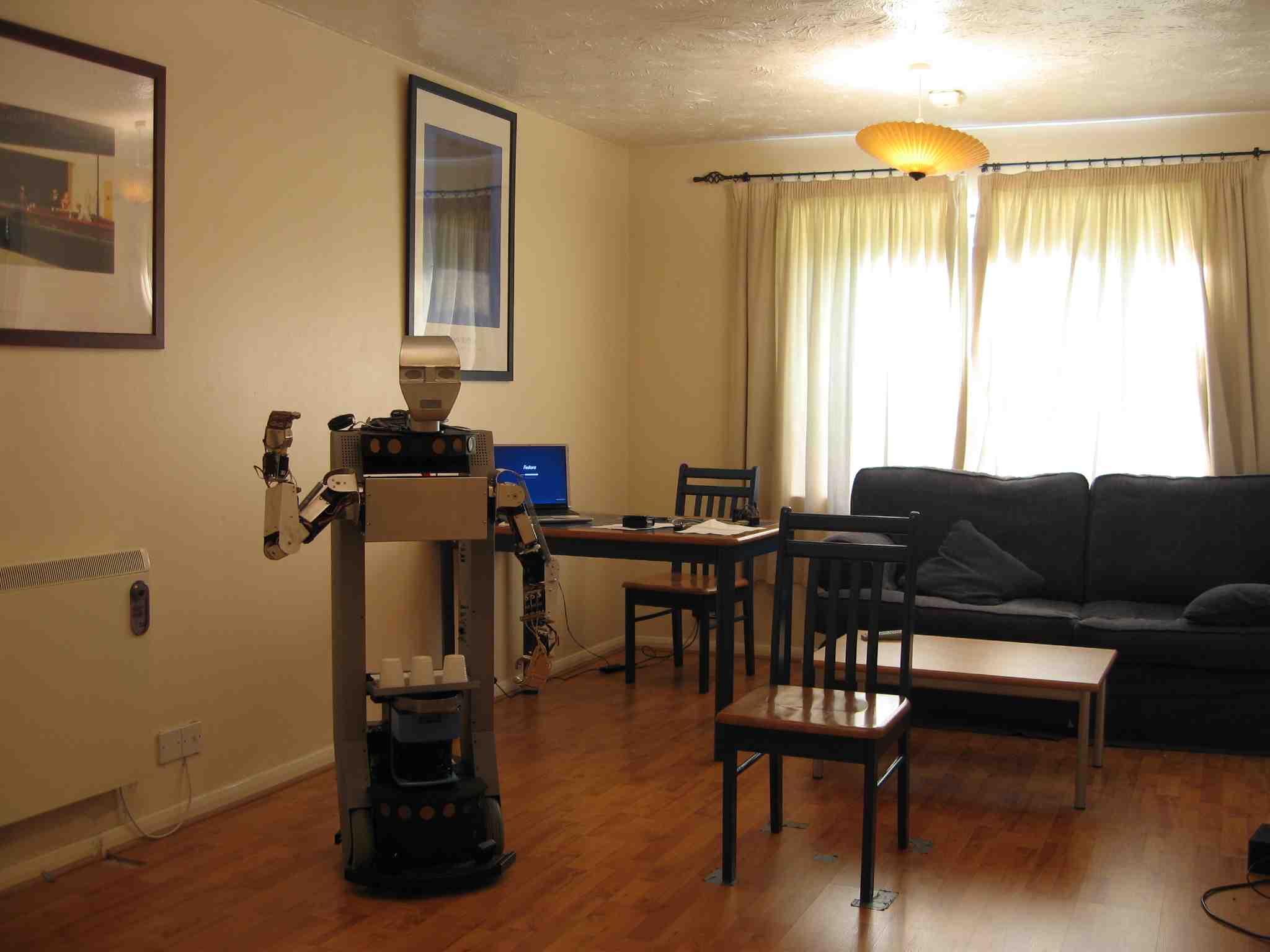A magazine where the digital world meets the real world.
On the web
- Home
- Browse by date
- Browse by topic
- Enter the maze
- Follow our blog
- Follow us on Twitter
- Resources for teachers
- Subscribe
In print
What is cs4fn?
- About us
- Contact us
- Partners
- Privacy and cookies
- Copyright and contributions
- Links to other fun sites
- Complete our questionnaire, give us feedback
Search:
Future Friendly: Focus on Kerstin Dautenhahn

Kerstin Dautenhahn is a biologist with a mission: to help us make friends with robots. Kerstin was always fascinated by the natural world around her, so it was no surprise when she chose to study Biology at the University of Bielefeld in Germany. Afterwards she went on to study a Diploma in Biology where she researched into the leg reflexes in stick insects, a strange start it may seem for someone who would later become one of the world's foremost robotics researchers. But it was through this fascinating bit of biology that Kerstin became interested in the ways that living things process information and control their body movements, an area scientists call biological cybernetics. This interest in trying to understand biology made her want to build things to test her understanding, these things would be based on ideas copied from biological animals but be run by computers, these things would be robots.
Follow that robot
From humble beginning building small robots that followed one another over a hilly landscape, she started to realise that biology was a great source of ideas for robotics, and in particular that the social intelligence that animals use to live and work with each other could be modelled and used to create sociable robots. She started to ask fascinating questions like "What's the best way for a robot to interrupt you if you are reading a newspaper - by gesturing with its arms, blinking its lights or making a sound?" and perhaps most importantly "When would a robot become your friend?" Now at the School of Computer Science at the University of Hertfordshire where she is a Professor of Artificial Intelligence, she leads a world famous research group looking to try and build friendly robots with social intelligence.
Good robot / Bad robot - East vs West
Kerstin, like many other robotics researchers, is worried that most people tend to look on robots as being potentially evil. If we look at the way robots are portrayed in the movies that's often how it seems: it makes a good story to have a mechanical baddie. But in reality robots can provide a real service to humans, from helping the disabled, assisting around the home and even becoming friends and companions. The baddie robot ideas tends to dominate in the west, but in Japan robots are very popular and robotics research is advancing at a phenomenal rate. There has been a long history in Japan of people finding mechanical things that mimic natural things interesting and attractive. It is partly this cultural difference that has made Japan a world leader in robot research. But Kerstin and others like her are trying to get those of us in the west to change our opinions by building friendly robots and looking at how we relate to them.
Polite robots roam the room
Kerstin decided that the best way to see how people would react to a robot around the house was to rent a flat near the university, and fill it with robots. Rather than examine how people interacted with robots in a laboratory, moving the experiments to a real home, with bookcases, biscuits, sofas and coffee tables, make it real. She and her team looked at how to give their robots social skills, what was the best way for a robot to approach a person? At first they thought that the best approach would be straight from the front, but they found that humans felt this too aggressive, so the robots were trained to come up gently from the side. The people in the house were also given special 'comfort buttons', devices that let them indicate how they were feeling in the company of robots. Again interesting things happened, it turned out that not all, but quite a lot of people were on the whole happy for these robots to be close to themselves, closer in fact than they would normally let a human approach. Kerstin explains 'This is because these people see the robot as a machine, not a person, and so are happy to be in close proximity. You are happy to move close to your microwave, and it's the same for robots'. These are exciting first steps as we start to understand how to build robots with socially acceptable manners. But it turns out that robots need to have good looks as well as good manners if they are going to make it in human society.
Looks are everything for a robot?
How we interact with robots also depends on how the robots look. Researchers had found previously that if you make a robot look too much like a human being, people expect it to be a human being, with all the social and other skills that humans have. If it doesn't have these, we find interaction very hard. It's like working with a zombie, and it can be very frightening. This fall in acceptability of robots that look like, but aren't quite, human is what researchers call the 'uncanny valley', so people prefer to encounter a robot that looks like a robot and acts like a robot. Kerstin's group found this effect too, so they designed their robots to look and act they way we would expect robots to look and act, and things got much more sociable. But they are still looking at how we act with more human like robots and have built KASPAR, a robot toddler, which has a very realistic rubber face capable of showing expressions and smiling, and video camera eyes that allow the robot to react to your behaviours. He possesses arms so can wave goodbye or greet you with a friendly gesture. He's very lifelike and hopefully as KASPAR's programming grows, and his abilities improve he will emerge from the uncanny valley to become someone's friend.
Autism - mind blindness and robots
The fact that most robots at present look like and act like robots can help in supporting children with autism. Autism is a condition that prevents you from developing an understanding of how to interact socially with the world. A current theory to explain the condition is that those who are autistic cannot form a correct understanding of others intentions, its called mind blindness. For example if I came into the room wearing a hideous hat and asked you 'Do you like my lovely new hat?' you would probably think, 'I don't like the hat, but he does, so I should say I like it so as not to hurt his feelings', you have a mental model of my state of mind (that I like my hat). An autistic person is likely to respond 'I don't like your hat', if this is what he feels. Autistic people cannot create this mental model so find it hard to make friends and generally interact with people, as they can't predict what people are likely to say, do or expect.
Playing with Robot toys
It's different with robots, many autistic children have an affinity with robots. Robots don't do unexpected things. Their behaviour is much simpler, because they act like robots. Using robots Kerstin's group have been examining how we can use this interaction with robot toys to help some autistic children to develop skills to allow them to interact better with other people. By controlling the robot's behaviours some of the children can develop ways to mimic social skills, which may ultimately improve their quality of life. There is no final conclusion yet, but some promising results, and this work continues to be only one way to try and help those suffering with this socially isolating condition.
Future friendly
It's only polite that the last word goes to Kerstin:
'I firmly believe that robots as assistants can potentially be very useful in many application areas. For me as a researcher, working in the field of human-robot interaction is exciting and great fun. In our team we have people from various disciplines working together on a daily basis, including computer scientists, engineers and psychologist. This collaboration, where people need to have an open mind towards other fields, as well as imagination and creativity, are necessary in order to make robots more social.'
In the future, when robots become our workmates, colleagues and companions it will be in part down to Kerstin and her teams pioneering effort as they work towards making the our future friendly.






